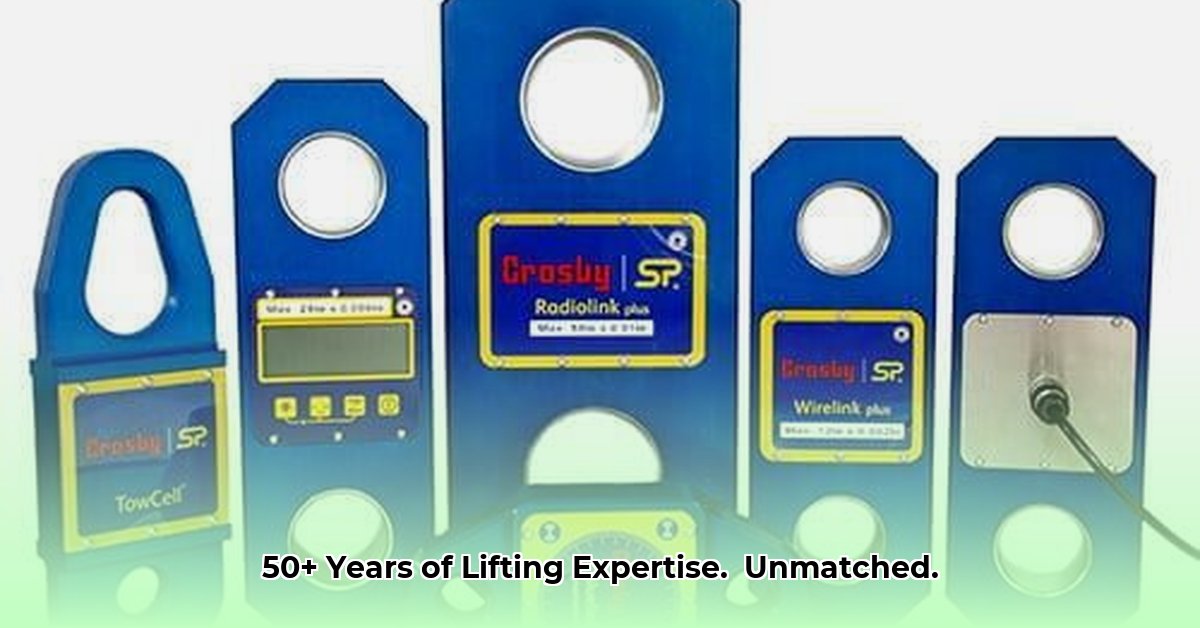
Eastern Sling Boston has been a leading provider of industrial lifting equipment and solutions for over 50 years, establishing a reputation for reliability and expertise in the Northeast. Their longevity reflects a commitment to quality, customer satisfaction, and adaptation to evolving industry needs. This article explores their strengths, competitive advantages, and strategies for continued growth, offering actionable insights for stakeholders.
A Legacy of Lifting: Eastern Sling Boston's History and Growth
For over half a century, Eastern Sling Boston has built a strong reputation based on providing not just equipment, but also peace of mind. Understanding the significant costs associated with equipment downtime, they prioritize minimizing risks for their clients. Their success in a competitive market demonstrates a commitment to innovation and adaptation to industry changes. This history underscores their deep understanding of the lifting equipment sector.
Strategic Positioning: Dual Locations for Enhanced Service
Operating from strategically located facilities in Avon, Massachusetts, and Long Island City, New York, Eastern Sling Boston provides efficient coverage of a significant portion of the Northeast. This dual-location strategy ensures quick response times, a critical advantage in time-sensitive situations. Reduced downtime directly translates to enhanced customer satisfaction and a significant competitive edge.
Beyond the Basics: Expertise in "Below the Hook" Solutions
Eastern Sling Boston's specialization lies in "below the hook" solutions—the critical components directly connecting to the load, such as slings, shackles, and other essential lifting equipment. Their mastery of these components allows them to provide customized solutions tailored to diverse client needs. This specialized focus sets them apart from general equipment suppliers. How crucial are these below-the-hook components to safe and efficient operations? They are absolutely critical, representing the direct interface between the lifting mechanism and the load.
Competitive Advantage: Experience and Customer Relationships
While the lifting equipment market is competitive, Eastern Sling Boston maintains a strong position due to its extensive experience, specialized skills, and dedication to long-term customer relationships. Their numerous long-standing clients are a testament to their commitment to quality and service. What is their key differentiator? Their unwavering focus on minimizing client downtime.
Actionable Strategies for Continued Success
The following table outlines actionable strategies for various stakeholders to ensure Eastern Sling Boston's continued growth and success.
| Stakeholder | Short-Term Goals | Long-Term Goals |
|---|---|---|
| ESS Management | Website modernization; address inconsistent contact information; improve internal communication. | Geographic expansion; explore new product lines; invest in employee training and development. |
| Customers | Enhanced online resources (FAQs, support videos); improved communication channels. | Personalized training programs; expanded warranty options; loyalty programs. |
| Competitors | Maintain competitive pricing; strengthen brand recognition through specialized expertise. | Forge strategic alliances; consider mergers; develop innovative solutions. |
| Investors/Financiers | Improve operational efficiency, boost profitability; demonstrate a consistent track record. | Explore new market segments; adopt advanced technologies; focus on sustainability. |
Risk Mitigation and Proactive Management
Eastern Sling Boston faces various risks, necessitating a proactive risk management approach.
| Risk Factor | Likelihood | Impact | Mitigation Strategy |
|---|---|---|---|
| Inconsistent Contact Info | Medium | Medium | Comprehensive website audit; centralized contact management system. |
| Competitive Pressure | High | High | Continuous innovation; niche specialization; exceptional customer service. |
| Economic Downturn | Medium | High | Diversify revenue streams; cost control; strong strategic partnerships. |
| Supply Chain Disruptions | Medium | Medium | Diverse sourcing options; robust inventory management. |
| Regulatory Changes | Medium | High | Dedicated compliance team; proactive regulatory monitoring. |
Compliance, Sustainability, and Future Growth
Eastern Sling Boston's commitment to OSHA compliance and other safety regulations is paramount. Beyond regulatory adherence, a commitment to environmental responsibility, including waste disposal and sustainable practices, is crucial. This approach strengthens their reputation and demonstrates a commitment to corporate social responsibility.
Choosing the Right Industrial Lifting Sling: A Practical Guide
Eastern Sling Boston’s expertise highlights the critical importance of proper sling selection. Improper selection can lead to serious accidents and costly damage.
Understanding Your Lifting Needs
Before selecting a sling, carefully consider the load's weight, shape, material, and the environmental conditions (temperature, chemical exposure, etc.). A delicate glass panel requires a different sling than a heavy steel beam.
Sling Material Comparison: Wire Rope, Chain, and Synthetic
Each sling material offers unique properties.
| Sling Type | Pros | Cons | Ideal Applications |
|---|---|---|---|
| Wire Rope | High strength, durable | Prone to corrosion, damage | Heavy lifting, demanding environments |
| Chain | Flexible, suitable for oddly shaped loads | Prone to wear, elongation; can damage loads | Irregularly shaped loads, where flexibility is key |
| Synthetic (e.g., polyester, nylon) | Lightweight, easy to handle, gentle on loads | Lower strength; susceptible to UV degradation and certain chemicals | Delicate loads, where damage is a major concern |
Working Load Limit (WLL): A Crucial Safety Factor
The Working Load Limit (WLL) is the maximum safe load a sling can support. Never exceed the WLL. Always choose a sling with a WLL significantly higher than the anticipated load weight.
Inspection and Maintenance: Preventing Accidents
Regular inspections are essential. Look for wear, damage, corrosion, or deformation. A damaged sling is a serious safety hazard. Adhere to manufacturer guidelines for inspection frequency and procedures.
Step-by-Step Sling Selection Guide
- Assess the Load: Determine the load's weight, shape, and material.
- Environmental Factors: Consider temperature, chemical exposure, etc.
- Sling Material: Choose the appropriate material based on the load and environment.
- Verify WLL: Ensure the sling's WLL significantly exceeds the load weight.
- Inspect Before Use: Thoroughly inspect the sling for any damage.
Choosing the right industrial lifting sling requires a careful consideration of all these factors, ensuring safe and efficient lifting operations.